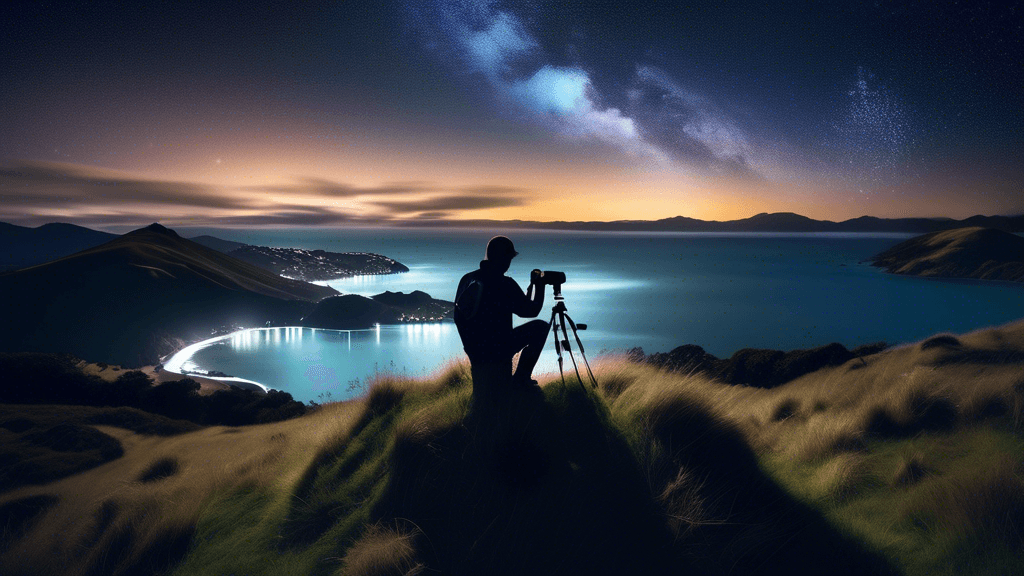
Canvas of Light: Mastering Night Sky Photography in New Zealand
Share
Introduction to Night Sky Photography in Newigail Zealand
Have you ever gazed up at the night sky and wished you could capture its majesty? New Zealand, with its pristine skies and minimal light pollution, provides one of the best canvases in the world for night sky photography. This form of photography, while offering breathtaking results, comes with its own set of challenges and requirements.
The Allure of New Zealand's Night Skies
New Zealand's geographical isolation and wide-open landscapes make it an ideal location for capturing the beauty of the cosmos. Places like the Aoraki Mackenzie Dark Sky Reserve, which is internationally recognized for its quality starlit nights and minimal light pollution, offer unparalleled opportunities for photographers.
Why Choose New Zealand for Astrophotography?
Photographers are drawn to New Zealand's night skies for several compelling reasons:
- Minimal Light Pollution: Many areas across the country have strict controls on light pollution, thereby ensuring the skies are dark and stars are vivid.
- Diverse Landscapes: The combination of mountains, lakes, and forests provides a dramatic backdrop for nighttime photography.
- Accessibility: Many dark sky areas are easily accessible by roads and have nearby accommodations, making night time expeditions more feasible.
Essential Gear for Capturing the Night Sky
Getting started in night sky photography requires specific equipment tailored to the needs of low-light and long exposure captures. Here’s what you’ll need:
- A Durable Tripod: Stability is key in night photography to prevent blurring during long exposures.
- A Camera Capable of Manual Settings: This allows more control over exposure settings which are crucial under low-light conditions.
- Wide-Angle Lens: A lens with a wide aperture (f/2.8 or wider) is ideal for astrophotography as it allows more light to hit the sensor in a shorter time, making it easier to capture detailed images of the sky.
The Technique Behind the Perfect Shot
Understanding the science and art behind night sky photography is just as important as having the right gear. Here are some technical tips to help you capture that perfect celestial shot:
- Focus Manually: Autofocus is nearly useless in the dark, so switch to manual focus and use the live view zoom feature to focus on a bright star.
- Use the Rule of 500: To avoid star trails, use the rule of 500 which involves dividing 500 by the focal length of your lens to determine the longest exposure before stars start to blur.
- Experiment with ISO Settings: While higher ISOs will make the stars more visible, it also increases the grain or noise. Finding the right balance is key.
Environmental Considerations and Ethics
As you step into the world of night sky photography, it's crucial to remember your role as an environmental steward. Here are some ways to ensure you leave no trace:
- Avoid Light Pollution: Even small amounts of light can disrupt nocturnal wildlife. Use a red flashlight to see in the dark as it is less disruptive.
- Stay on Trails: This helps in minimizing soil erosion and plant damage in sensitive areas.
- Pack In, Pack Out: Always take your trash with you to maintain the pristine nature of dark sky sites.
Conclusion: The Journey to Mastering Night Sky Photography
Master,” heeded the call to capture the grandeur of night skies with a camera. While the learning curve may be steep, the rewards are undoubtedly worth the effort. New Zealand offers some of the most spectacular vistas for night sky photographers and invites both amateur and professional photographers to challenge themselves and create stunning celestial compositions.
As Sir Richard Taylor, a renowned film director, once said, The stars are the land's poetry, etched against the wide canvas of our skies, they remind us of the awe-inspiring beauty of the simple things we often overlook.
Are you ready to capture the canvas of light that the New Zealand night skies lay before you? Prepare your gear, plan your trip, and open your eyes and lenses to the wonders above. The stars await.





